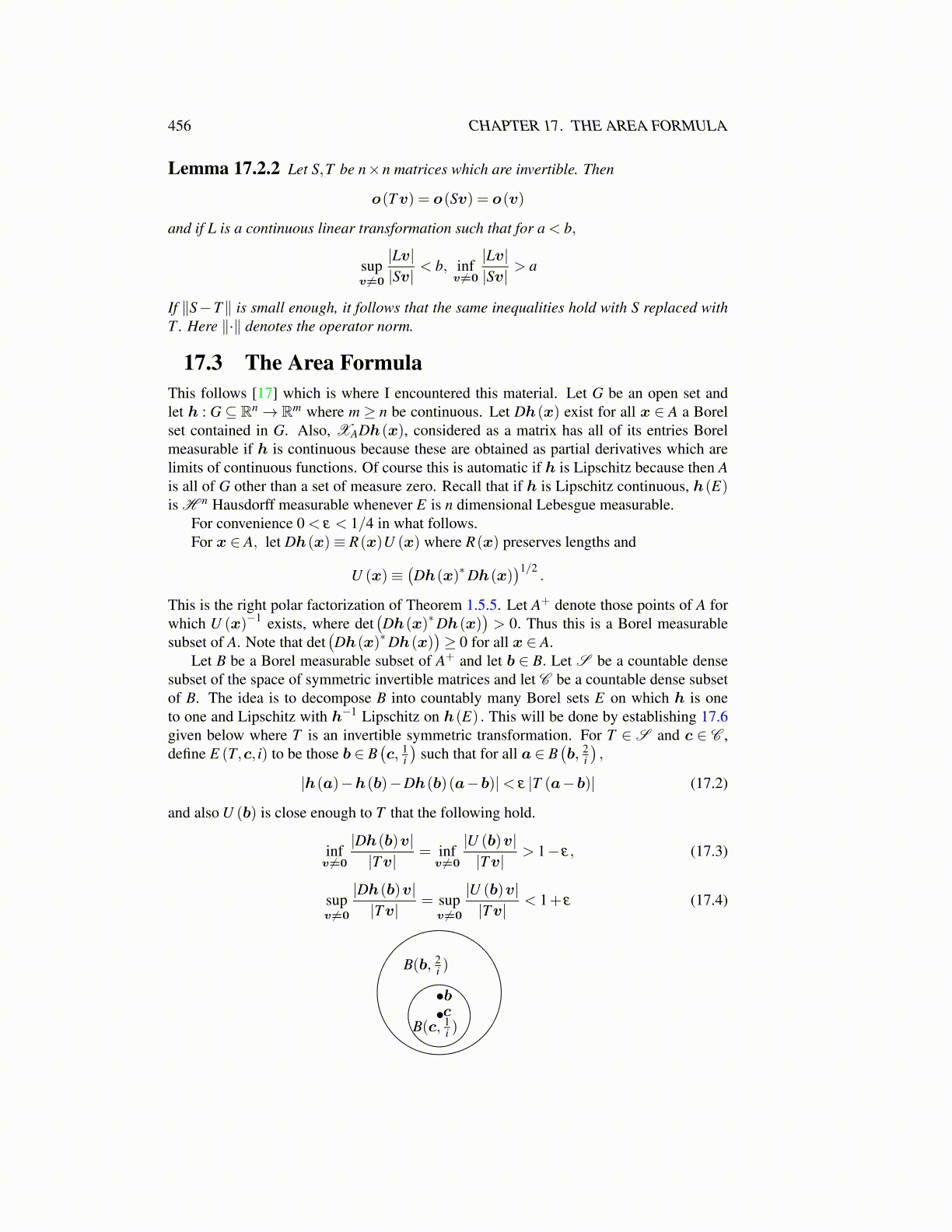
456 CHAPTER 17. THE AREA FORMULA
Lemma 17.2.2 Let S,T be n×n matrices which are invertible. Then
o(Tv) = o(Sv) = o(v)
and if L is a continuous linear transformation such that for a < b,
supv ̸=0
|Lv||Sv|
< b, infv ̸=0
|Lv||Sv|
> a
If ∥S−T∥ is small enough, it follows that the same inequalities hold with S replaced withT . Here ∥·∥ denotes the operator norm.
17.3 The Area FormulaThis follows [17] which is where I encountered this material. Let G be an open set andlet h : G ⊆ Rn→ Rm where m ≥ n be continuous. Let Dh(x) exist for all x ∈ A a Borelset contained in G. Also, XADh(x), considered as a matrix has all of its entries Borelmeasurable if h is continuous because these are obtained as partial derivatives which arelimits of continuous functions. Of course this is automatic if h is Lipschitz because then Ais all of G other than a set of measure zero. Recall that if h is Lipschitz continuous, h(E)is H n Hausdorff measurable whenever E is n dimensional Lebesgue measurable.
For convenience 0 < ε < 1/4 in what follows.For x ∈ A, let Dh(x)≡ R(x)U (x) where R(x) preserves lengths and
U (x)≡(Dh(x)∗Dh(x)
)1/2.
This is the right polar factorization of Theorem 1.5.5. Let A+ denote those points of A forwhich U (x)−1 exists, where det
(Dh(x)∗Dh(x)
)> 0. Thus this is a Borel measurable
subset of A. Note that det(Dh(x)∗Dh(x)
)≥ 0 for all x ∈ A.
Let B be a Borel measurable subset of A+ and let b ∈ B. Let S be a countable densesubset of the space of symmetric invertible matrices and let C be a countable dense subsetof B. The idea is to decompose B into countably many Borel sets E on which h is oneto one and Lipschitz with h−1 Lipschitz on h(E) . This will be done by establishing 17.6given below where T is an invertible symmetric transformation. For T ∈ S and c ∈ C ,define E (T,c, i) to be those b ∈ B
(c, 1
i
)such that for all a ∈ B
(b, 2
i
),
|h(a)−h(b)−Dh(b)(a−b)|< ε |T (a−b)| (17.2)
and also U (b) is close enough to T that the following hold.
infv ̸=0
|Dh(b)v||Tv|
= infv ̸=0
|U (b)v||Tv|
> 1− ε, (17.3)
supv ̸=0
|Dh(b)v||Tv|
= supv ̸=0
|U (b)v||Tv|
< 1+ ε (17.4)
•b•c
B(c, 1i )
B(b, 2i )